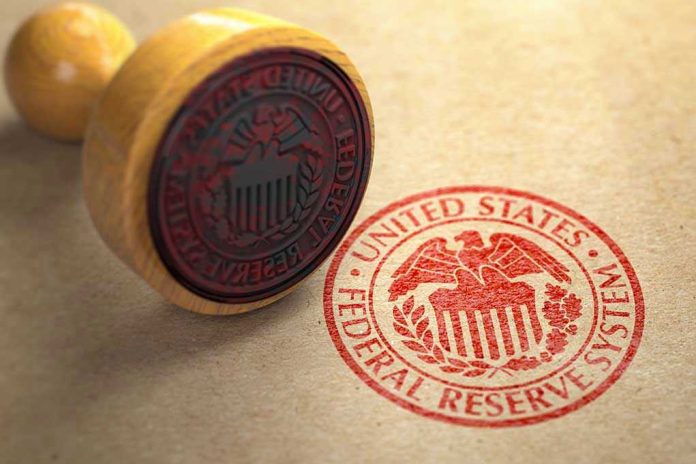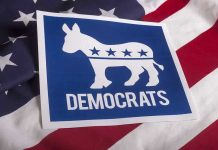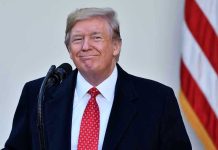
When a sitting president openly signals he’s handpicking the next Federal Reserve Chair to reshape America’s economy—even before the incumbent’s term is up—the future of the nation’s money, and the very independence of its central bank, hang in the balance.
Story Snapshot
- Trump has declared he knows who he wants to lead the Fed, but the name remains a secret—for now.
- The shortlist for the next Fed Chair includes candidates aligned with Trump’s push for lower rates and expanded tariffs.
- Markets and policymakers are on edge, uncertain how much presidential influence will tip the balance at the Federal Reserve.
- The outcome could upend decades of central bank independence and redefine U.S. economic policy for years to come.
Trump’s Public Pressure Campaign Rewrites the Rules
Donald Trump has never been shy about his opinions on interest rates or the officials who set them. In late 2025, he broke with decades of White House tradition by publicly declaring, “I think I know my choice,” referring to the next Federal Reserve Chair. With incumbent Jerome Powell’s term ending in May 2026, Trump’s hints and jabs at Powell—calling him “Mr. Too Late” and “a knucklehead”—have signaled a desire for a radical shift in monetary policy. Trump’s strategy is clear: he wants someone at the Fed who will move quickly to cut rates, boost exports, and support his economic agenda, disregarding the longstanding separation between the presidency and the central bank.
His nomination of Stephen Miran, a strong proponent of lower rates and aggressive tariffs, to fill a temporary vacancy on the Fed Board only heightened speculation. Miran openly acknowledged during Senate hearings that Trump chose him precisely for his shared policy views but insisted he would act independently if confirmed. The message to markets and policymakers was unmistakable: the next Fed Chair will not just be an economic technocrat, but a soldier in Trump’s broader policy campaign.
The Shortlist: Insiders, Loyalists, and Wall Street Veterans
The process for choosing the next Fed Chair has become a high-stakes political spectacle. Treasury Secretary Scott Bessent, acting as gatekeeper and strategist, unveiled a shortlist of five finalists: Michelle Bowman, Christopher Waller, Kevin Warsh, Kevin Hassett, and Rick Rieder. Each brings a different shade of experience and policy inclination, from Fed insiders comfortable with tradition to Wall Street figures and former administration officials eager to break with convention.
Bessent’s careful management of the search is a balancing act—satisfying Trump’s demand for loyalty while maintaining a veneer of credibility necessary for Senate confirmation. The finalists’ records are scrutinized not just for economic expertise but also for their willingness to carry out Trump’s vision of a more interventionist, growth-oriented Fed. With the president holding the ultimate authority to nominate, the process has become less about independent stewardship and more about political alignment.
Fed Independence in the Crosshairs
The Federal Reserve’s independence has long been a cornerstone of American economic stability, designed to insulate monetary policy from short-term political pressures. Trump’s approach, however, has revived fears not seen since the Nixon era, when political interference contributed to runaway inflation and a loss of confidence in the central bank. Legal scholars and economists warn that a chair perceived as a political appointee could erode the Fed’s credibility, spook financial markets, and ultimately harm the very economy Trump seeks to boost.
Public pressure campaigns, nominations of ideological allies like Miran, and the president’s open disdain for Powell have already injected unprecedented uncertainty into the markets. Investors are bracing for sharper swings in equities, bonds, and even cryptocurrencies as they attempt to game out whether a dovish Fed will drive down rates or risk stoking inflation. The stakes extend beyond Wall Street: consumers could see borrowing costs drop, but savers might suffer if inflation takes off. For businesses, lower rates offer the prospect of cheaper capital, but at the risk of long-term instability.
Countdown to a Defining Decision
As 2025 draws to a close, the White House’s search for the next Fed Chair nears its climax. Trump has promised to reveal his choice by year’s end, keeping both markets and political observers in suspense. The Senate’s pending confirmation of Miran, the ongoing interviews with the five finalists, and the looming expiration of Powell’s chairmanship have set the stage for a seismic shift in U.S. monetary policy.
The coming announcement will not only determine the trajectory of interest rates but will also test the resilience of the central bank’s independence. If Trump’s pick is seen as a political loyalist, the move could trigger legal challenges, bruising confirmation battles, and a permanent change in how America manages its money. The consequences will ripple through financial markets, the global economy, and the political fabric of the nation. The only certainty: the Federal Reserve’s next chapter will be anything but business as usual.
Sources:
Consumer Finance and Fintech Blog












